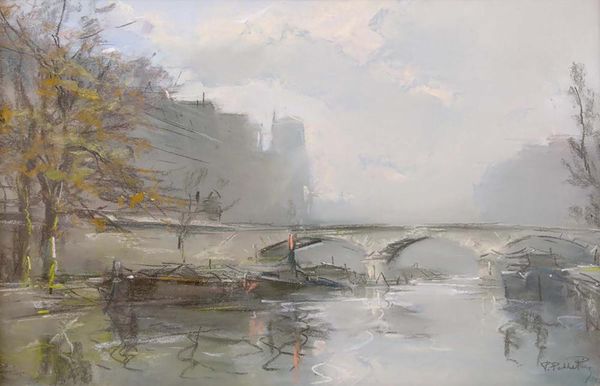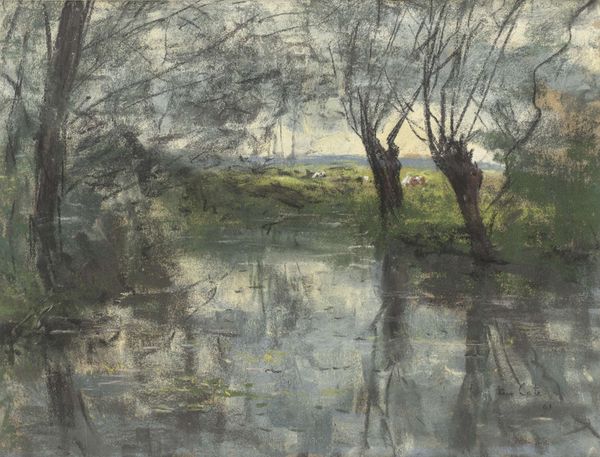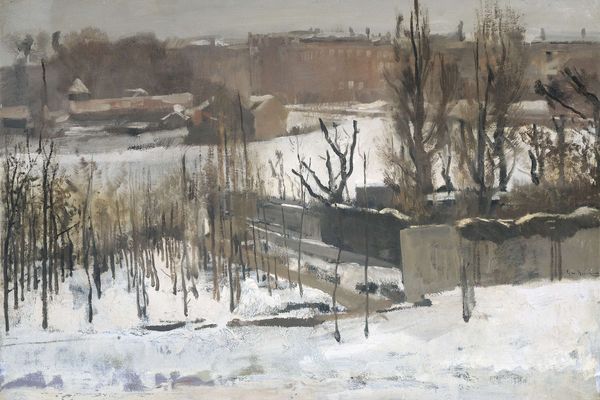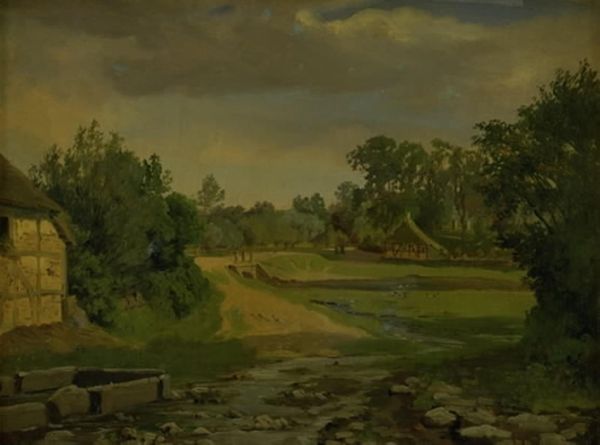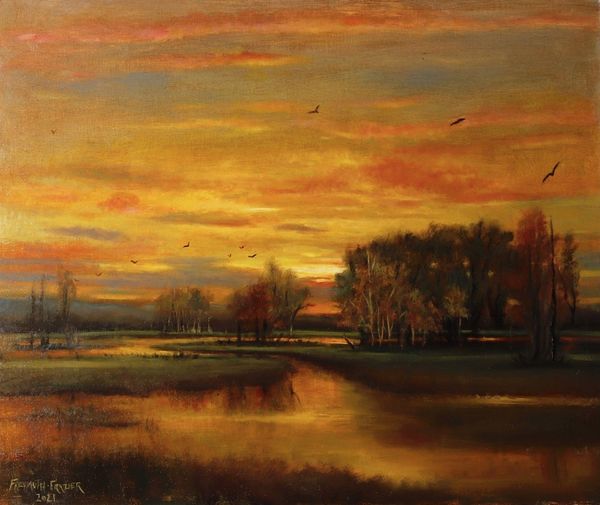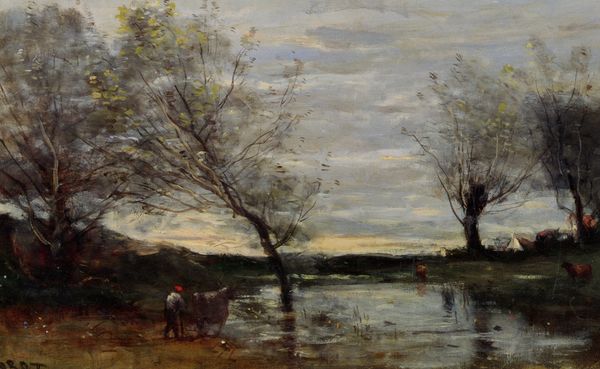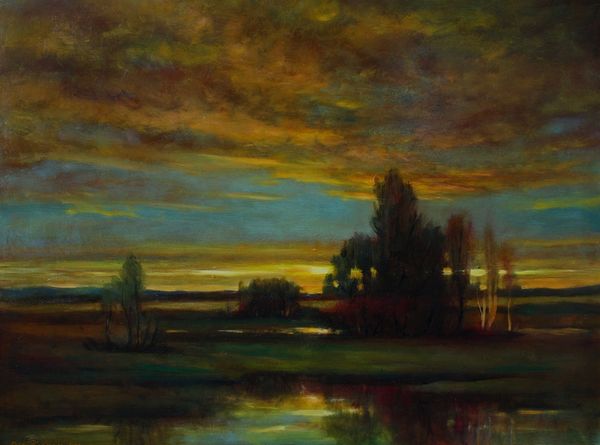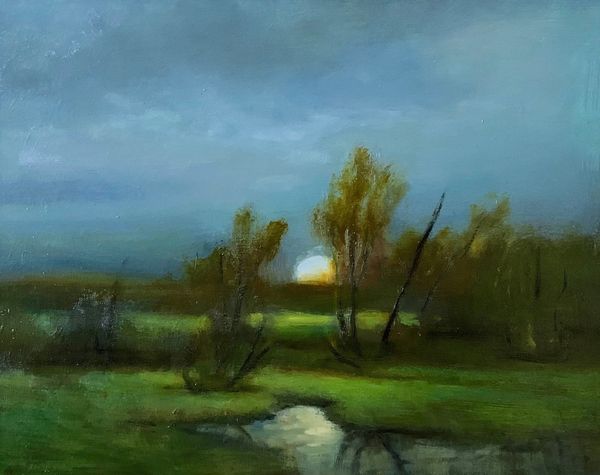
painting, plein-air, oil-paint
#
sky
#
painting
#
impressionism
#
plein-air
#
oil-paint
#
landscape
#
impressionist landscape
#
oil painting
#
cityscape
Dimensions: 28 x 39 cm
Copyright: Public domain
Editor: So this is “Le Pont Neuf, Paris,” an oil painting attributed to Pierre-Jacques Pelletier. It's quite atmospheric. There's something about the way the light reflects on the water. What stands out to you in this piece? Curator: I’m drawn to the impasto application of the oil paint – notice how the surface isn’t smooth but has texture. It tells a story about the artist’s labor, a direct engagement with the materiality of paint itself. We must think about where Pelletier acquired his paints, and what that process would have looked like in the period in which he painted this, or *might* have painted this given there is no hard date. Editor: I hadn't considered the paint itself. Does the way the artist uses the paint, the texture, relate to the subject matter? Curator: Absolutely. The visible brushstrokes capture the fleeting moment, a core tenet of Impressionism, of course. But let’s go further; plein-air painting became more feasible with the advent of easily transportable paint tubes. The means of production, distribution, and consumption allowed this aesthetic to even exist, wouldn't you say? Editor: That’s fascinating! The industrial production of art supplies influenced the style of the artwork itself. Curator: Precisely. And look at how the muted color palette mimics the somber industrial atmosphere emerging in Paris. It’s not just pretty light; it reflects a rapidly changing social landscape shaped by industrial labor. Editor: I guess I had been stuck on thinking of Impressionism as purely aesthetic, not tied to production! I see this painting in a new light now. Curator: That's what happens when we look at the material conditions behind art. We begin to understand the artist's hand, the industry that supports that hand, and how both shape the artwork's meaning.
Comments
No comments
Be the first to comment and join the conversation on the ultimate creative platform.
